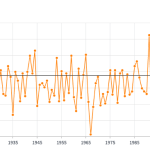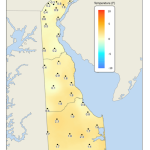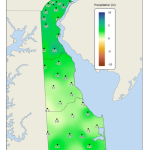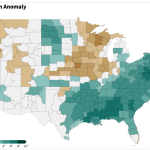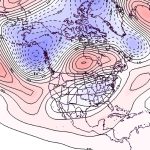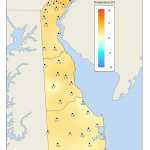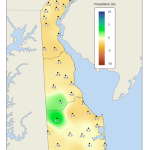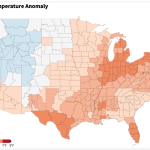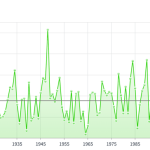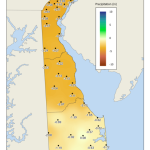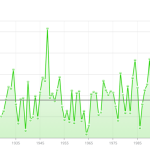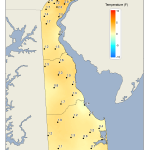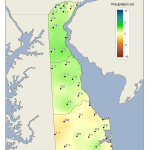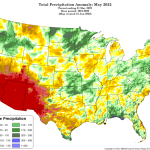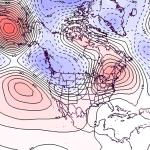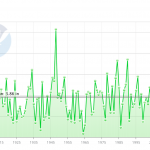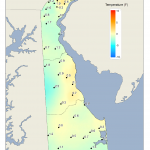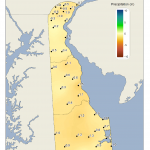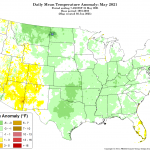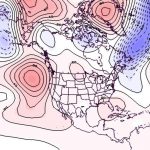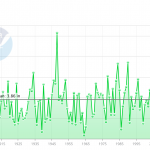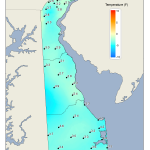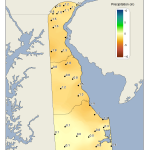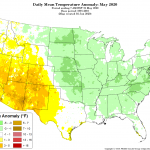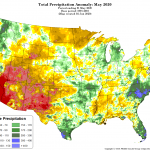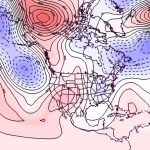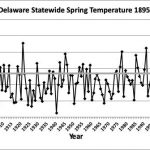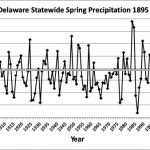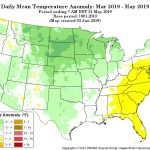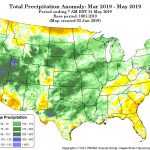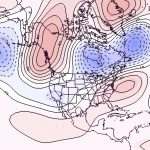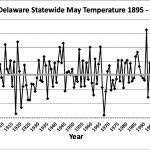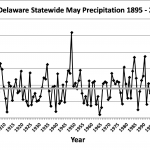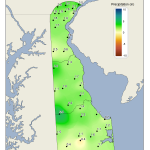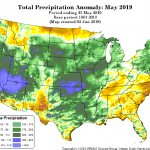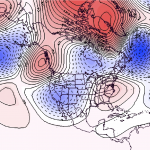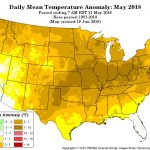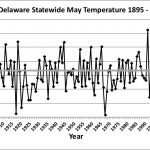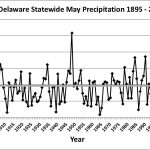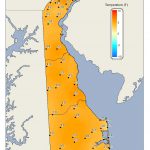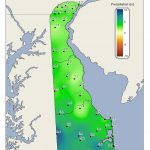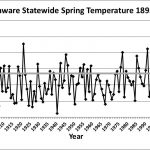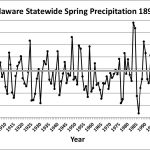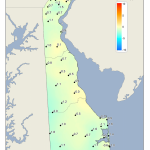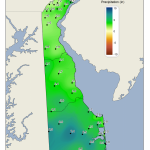May Temperatures
Preliminary data indicates that the statewide average temperature in May was 65.2o F, which is 1.6o F above the 1991-2020 mean value of 63.6o F (Figure 1). May 2025 was the 18th warmest May on record since 1895.
May Precipitation
Delaware’s statewide precipitation for May 2025 averaged 6.37 inches, 2.79 inches above the 1991-2020 mean of 3.58 inches (Figure 2). May 2025 was the 7th wettest May since 1895.
Statewide Spatial Anomalies
Data from the Delaware Environmental Observing System (DEOS) show that temperature departures were generally positive across the State (Figure 3), with the largest temperature anomalies found across southern Delaware. Precipitation was above normal throughout the state with the largest positive anomalies found across New Castle County where many stations saw precipitation anomalies of greater than 4 inches (Figure 4).
National Anomalies
Temperatures were generally above normal along the Atlantic, Pacific, and Gulf coasts, while the central portions of the country saw near normal or just below normal temperatures (Figure 5). Precipitation varied across the country (Figure 6) with much of the eastern portions of the country seeing positive precipitation anomalies (some areas over 4 inches). The Pacific Coast, the Pacific Northwest, and the western Great Lakes regions generally saw below normal precipitation. The 500 hPa height pattern for May showed an anomalous jet stream trough across the east central portions of the country, contributing to the negative temperature anomalies in that area (Figure 7).
Global Anomalies
May 2025 ranked as the second warmest May on record for the globe since 1850. Global temperatures were 1.98o F (1.10o C) above the 1901-2000 mean. Particular warmth was found across north central North America and the Arctic, while colder than normal conditions prevailed across Eastern Europe and much of India (Figure 8).
- Figure 1. Delaware statewide mean May temperature (oF) 1895-2025. The black line indicates the 1991-2020 normal (NOAA, NCEI, Climate at a Glance: Statewide Time Series).
- Figure 2. Delaware statewide May precipitation (inches) 1895-2025. The Black line indicates the 1991-2020 normal (NOAA, NCEI, Climate at a Glance: Statewide Time Series).
- Figure 3. May 2025 average temperature departures (oF) from the 1991-2020 mean based upon DEOS station data.
- Figure 4. May 2025 precipitation departures (inches) from the 1991-2020 mean based upon DEOS station data.
- Figure 5. United States climate division temperature anomalies (oF) for May 2025 (NOAA, NCEI, Climate at a Glance: Divisional Mapping).
- Figure 6. United States climate division precipitation anomalies (inches) for May 2025 (NOAA, NCEI, Climate at a Glance: Divisional Mapping).
- Figure 7. 500 hPa geopotential height anomalies for May 2025. Negative (blue) anomalies indicate the presence of an anomalous jet stream trough while positive (red) height anomalies indicate the presence of an anomalous jet stream ridge.
- Figure 8. Global temperature anomalies (oC) for May 2025 (NOAA, NCEI, Climate at a Glance: Global Mapping).


